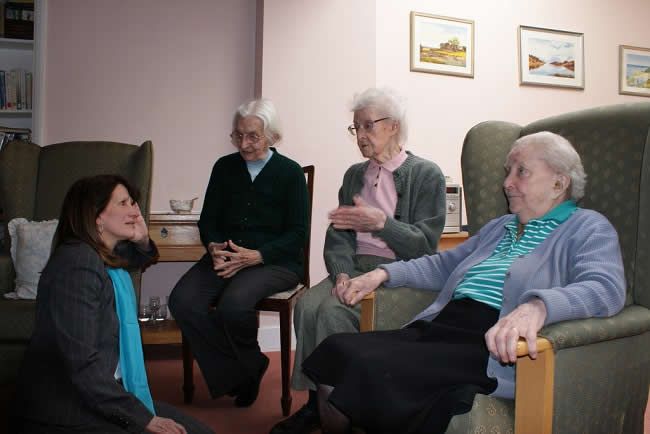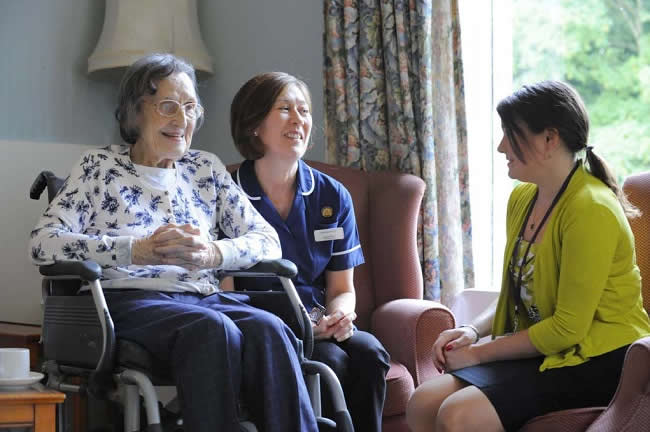Positive Health Online
Your Country

How will Care Homes Look in Years to Come?
listed in ageing, originally published in issue 248 - August 2018
People across the globe are beginning to live for longer. While this is great news for the overall health of the world’s population, it does also mean that individual requirements related to a person’s health become more complex as they get older. This is the case in the UK as it is with other countries, with a result of this being the necessity for care homes to make use of greater amounts of assistive technologies - ones which are intelligent in their setups, too.
Sustainable living environments will also need to be considered and developed by staff and care home providers. This is to ensure that patients are looked after appropriately when those in care require increasing amounts of supervision and attention.

A lack of governmental funding has left people questioning what the future of care homes will look like across the nation. However specialists in care homes for the blind and care homes across Paisley, are on hand to offer their views on how care homes will be run in the future. Keep reading to see how it assesses the technologies that will revolutionise the way people are cared for…
Quality will be more Important than Ever
Care homes funded by private means and social care alike will see quality emphasised within their ethos over the next two decades, according to research. This is because it has been suggested that this strategy has the potential for people to ‘live healthier and longer lives’, as Jane Ashcroft suggested in the Silver Chic report in the future of care homes.
The design of a care home will be one area where quality will be seen in particular. This is due to housing being implemented on a turntable, to help those living there be exposed to sunlight for the longest periods of time possible. As well as this, connectivity will also be a priority to help combat loneliness. To do this, care villages will use small bridges intersecting various gardens so that residents will be closer to both their natural environment and other residents within the community.
More Advanced and Innovative Technology
It’s not just quality that will become more important at care homes in the years to come, though. Technology is also becoming more advanced, and it is helping to ensure that patients remain safe within care homes while allowing them to live longer, healthier lives.
In fact, examples of advanced technology are already evident at care homes throughout the nation. Take, for instance, the facilities which now make use of sensors in rooms, as well as those with systems set up around the building which serve to alert staff when a patient has fallen, or when they have stopped moving. To help those living with dementia, clusters within buildings can be coloured variously with different lighting so that they are able to recognise their own living quarters.
Sensor technology isn’t just beneficial for improving how safe patients are when they are going about their daily lives in a care home either. Sensors can also be swallowed when combined with drugs in pill form. Once the pill has been swallowed and dissolved in the stomach, a signal is transmitted and data can be sent to a smartphone app.
As a result, patients and clinicians alike can make use of the technology to work out how well a person is adhering to a course of medication. If they aren’t taking well to a certain type of medication, then this can be rectified as early as possible and the medication can be changed to benefit the patient’s health and needs. Other versions of this technology include an automated dosage system developed by the Massachusetts Institute of Technology, whereby a small implantable device, which can release medication from inside the body, is controlled by an embedded microchip. What this means, is that for people with long-term conditions - or for women on contraception - dosages can be given for up to ten years without patients having to physically induce medication.
Don’t forget too that sensor technology can be used to better track behaviours. These types of technologies can therefore be specifically designed to ensure patient comfort, and help to guarantee their safety while living in care.

Introducing more Independent Living into Care Homes
One concern which can be raised among people when they are looking into the care system having never experienced it before is that they feel that they will lose a sense of independence once they have moved into a care home. Fortunately, technologies of the future are enabling those with specific care requirements to live their life in a more self-sufficient way.
An example of this technology can already be seen in our society - wearable devices, which at the moment can be used to track and measure everything from the steps that an individual takes in a given period to the distance they cover in a period of measurement and their heart rate. In the future though, wearable technologies will help to monitor fluid retention and respiratory rates, helping to lower hospital admissions, allowing patients to understand their own symptoms more effectively before they require medical assistance. Known as hospital-level diagnostics in the home, portable x-ray machines and blood-testing kits alongside other technologies provide those who require care with a better quality of life by giving them the independence to self-diagnose themselves without having to leave their homes or point of care.
It isn’t just wearable devices which should help people to feel more independent when they’re in a care home. Robotics will be used to help calm down dementia sufferers who have to deal with extreme stress, as well as used within robotic pets that can respond to human touch and respond in an intelligent way.
It is also predicted that advanced robots will be able to be used for general tasks, such as assisting to help patients to get in and out of their beds. On top of this, wearable robotic suits will be used to help sufferers of arthritis stand and walk, and they will also help those with severe mobility problems get around more comfortably.
We shouldn’t just think of robotics as items of clothing or AI versions of humans or pets either. Within a patient’s room, for instance, robotically controlled curtains alongside voice commands that also control lights and other devices will be used to help those who are blind and have visual impairments.
All of these concepts may not be around just yet, but they help to highlight that there is plenty of promise for the care homes of the future - for patients and staff alike. The technologies that are already being utilised, and the systems that are being proposed, will help patients lead more independent and comfortable lives so that they can live a happier and healthier life for longer.
Comments:
-
No Article Comments available